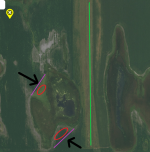cyclonenation10
Well-known member
For those of you fortunate enough to own your own slice of pheasant paradise, what habitat projects do you have planned between now and next Fall?
For me, it will start once the weather warms up with some ongoing tree hinge cutting along riparian areas and fence lines. The goal - reduce the habitat for avian predators while creating/winter habitat via downed trees/branches.
In the spring, we will start planting some food plots, primarily sorghum and corn, along with a sunflower plot which will be mowed for dove hunting in Late August.
There are also a couple of small burns we will do to keep reeds canary grass at bay, along with helping out some of the landowners (where I hunt) with their prescribed burns.
We will likely be expanding our young shelterbelt (currently about 4 rows of cedars surrounded by 3-4 rows of plums/button bush/dogwoods on either side. Hoping to add a few rows each year. Currently the shelterbelt is very young and does little for habitat, but within 4-5 years it should be a winter haven.
What does everyone else have planned? Anything in particular you have noticed pays large dividends for the birds?
For me, it will start once the weather warms up with some ongoing tree hinge cutting along riparian areas and fence lines. The goal - reduce the habitat for avian predators while creating/winter habitat via downed trees/branches.
In the spring, we will start planting some food plots, primarily sorghum and corn, along with a sunflower plot which will be mowed for dove hunting in Late August.
There are also a couple of small burns we will do to keep reeds canary grass at bay, along with helping out some of the landowners (where I hunt) with their prescribed burns.
We will likely be expanding our young shelterbelt (currently about 4 rows of cedars surrounded by 3-4 rows of plums/button bush/dogwoods on either side. Hoping to add a few rows each year. Currently the shelterbelt is very young and does little for habitat, but within 4-5 years it should be a winter haven.
What does everyone else have planned? Anything in particular you have noticed pays large dividends for the birds?


